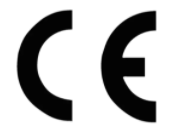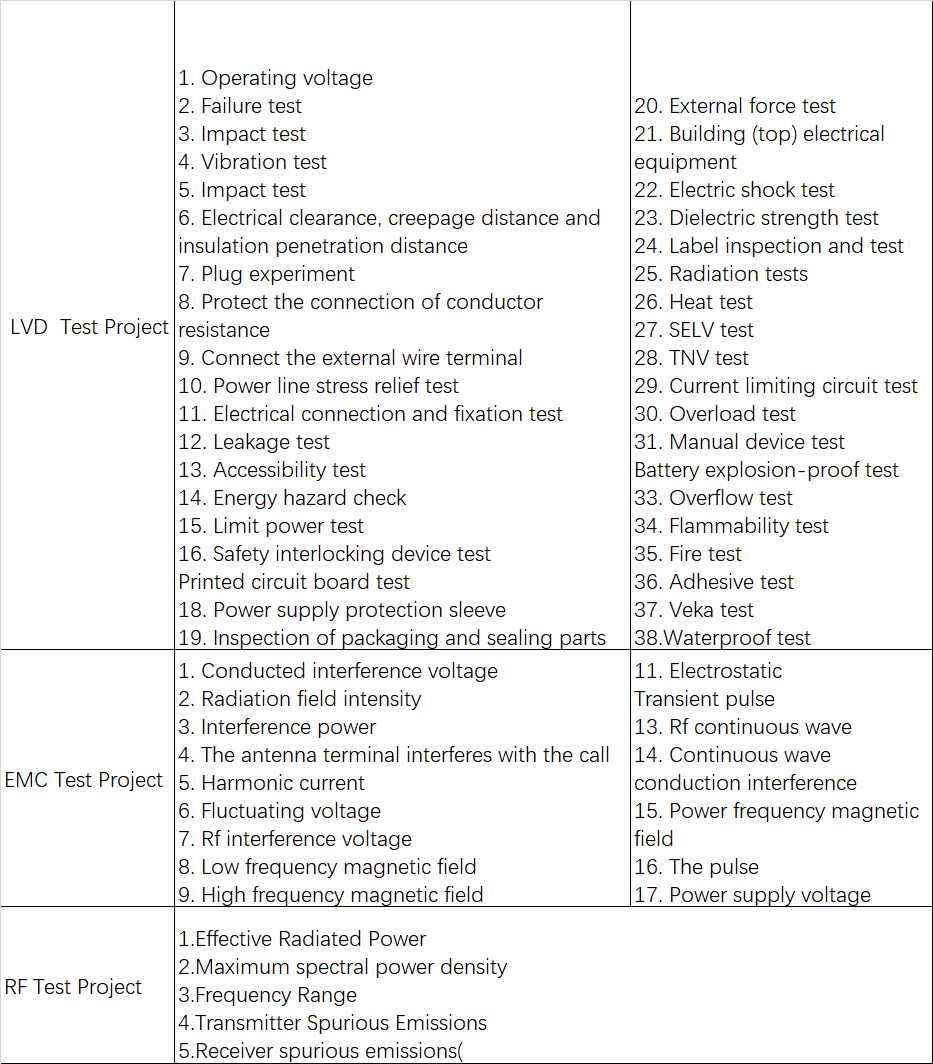CE, abbreviated from French "Communate Europpene", is the meaning of the European Community, referred to as the European Union. The CE mark is mandatory in the EU market. Regardless of whether the products are produced by companies within the European Union or produced by other countries, if they want to circulate freely on the EU market, they must be affixed with the CE mark to indicate that the products comply with the EU's The New Approach to Technical Coordination and Standardization. technical harmonization and standardization).
The CE marking:

Those without the CE mark cannot be sold on the market. Products that have been affixed with the CE mark and entered the market and found that they do not meet safety requirements shall be ordered to withdraw from the market. Those who continue to violate the relevant CE mark provisions of the directive will be restricted or prohibited from entering the EU market or Forced to exit the market.
Service scope:
Wireless products, communication products, power products, electronic products, household appliances, lamps, personal protection products, machinery products, etc.
Test standard:

CE Certification Program:
Wired products: EMC, LVD, RoHS, REACH
General wireless products: EMC, LVD, RF, RoHS, REACH
Near body communication products: EMC, LVD, RF, SAR, RoHS, REACH
CE Certification General test items:

Applicable area:
CE certification is available in 32 special economic zones in Europe, including: EU 28, EFTA Europe 3/4, Turkey. Products with CE marking can be freely distributed in the European Economic Area (EEA).
Specific EU 28 countries list: Belgium, Bulgaria, Czech Republic, Denmark, Germany, Estonia, Ireland, Greece, Spain, France, Croatia, Italy, Cyprus, Latvia, Lithuania, Luxembourg, Hungary, Malta, Netherlands, Austria, Poland , Portugal, Romania, Slovenia, Slovakia, Finland, Sweden, United Kingdom.
Note 1: EFTA includes four member states of Switzerland (Iceland, Norway, Switzerland and Liechtenstein), but CE marking is not mandatory in Switzerland;
Note 2: Because of the colonial era, CE certification is widely used and widely recognized worldwide. Some countries in Africa, Southeast Asia, and Central Asia may also receive CE certification.
Note 3: Britain has left the European Union.
Application process:
1. The applicant company fills in the application form, provides information, application form, product instruction manual and technical documents.
2. The agency evaluates CE certification inspection standards and CE certification inspection items and quotes.
3. Apply for company confirmation project and send samples.
5. The laboratory conducts product testing arrangements and reviews and evaluates the completeness of technical documents.
6. After the product test meets the requirements, provide a product test report or technical construction file to the applicant company, and issue a CE certificate after the test is passed.
7. The applicant company signs the CE guarantee self-declaration and attaches the CE mark on the product.
Application Datas:
1. Manufacturer's name, address (authorized representative of EU (authorized agent of EU)), product name, model number, etc.;
2. Product specifications;
3. The label
4. Product electrical schematic diagram, block diagram, circuit diagram, etc.;
5. List of key parts or raw materials (please select products with European certification mark);
6. Test report;
7. Relevant certificates issued by NB, an Authorized certification body of the European Union (outside mode A);
8. Registration certificate of products in EU (some products, such as Class I medical devices and general IVD in vitro diagnostic medical devices);
9. Declaration of Competency of the Chief Executive (DOC);